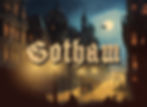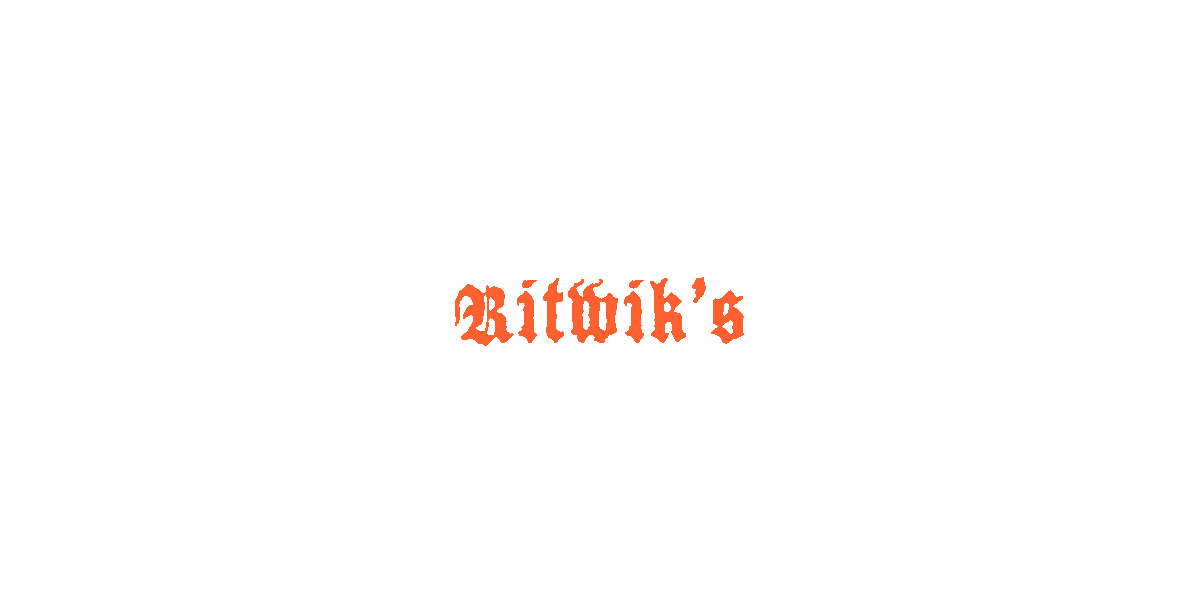The allure of Gotham's history in Batman comics
- Ritwik Raha
- Apr 4, 2023
- 6 min read
Updated: May 7, 2024

I am Gotham, and I see two murders on a cold night.
In the quiet hours of a night that is still young, a man, his wife, and their ten-year-old son walk down an alley lit with cowardly lights. The trio seems happy, content, and rich. A man stumbles across the alley from the other end. He emerges from his surroundings, shabby, cross, and nervous. A demand, a threat, a hush of protest, and then… Two loud bangs! The night is forever wounded by the terrific reality of this world. A hero is born.

We all know how Batman was born, on that unholy night. He was born out of man’s greed. He was born out of man’s fear. He was also born out of man’s disgust for his surroundings. In the cities, we build and live in. Gotham is a reflection of how we see our cities. Not the shining glorious citadel of the future. But the stinking, disgusting, rat-infested, crime-breeding conurbations that we are forced to seek refuge in.
Batman comics have been popular for decades, and one reason for their enduring appeal is the city of Gotham. However, with Batman comics, a very interesting theme has emerged in its almost 80-year-old run. For years now authors have woven stories that look into Gotham’s past.
I am Gotham, And I remember…
How, What and Why?
Let us see if we can answer this one by one.
How?
Well, that is easy, we keep a few things constant. The premise of Batman, the ideas that govern his rogue's gallery, the characters that will always survive in any generation and we change everything else. Set the clocks back a century or two.
What?
This is the longer answer that involves lists, maps, figures, and maybe even charts. We begin of course with goats.
Gotham or Gottam, means “Goat's Town” in old Anglo-Saxon. The actual word dates back to medieval England. We can find its mention in The Merry Tales of the Mad Men of Gottam. Gathered Together by A.B. of Phisicke, Doctor, 1630. But in Batman mythos, Gotham goes back farther.
It was once home to the Native American Miagani people, first mentioned in Batman: The Cult and explored further in the time-traveling adventures of Batman in the storyline Batman: The Return of Bruce Wayne.

The 1800s are when Gotham begins its growth into the city as we know it today. Spearheaded by four founding old money families—the Waynes, the Kanes, the Elliots and the Cobblepots—architects such as Cyrus Pinkney and Bradley and Nicholas Gate were commissioned to define the unique style of Gotham City’s skyline. (For more information on this time period, consult Batman: Gates of Gotham. ) All the while, a secret cabal of rich families which may well have included these founders was taking root beneath Gotham to keep this burgeoning American jewel a playground for the rich and powerful social elite. They called themselves the Court of Owls and would remain only legend until driven out of hiding by Batman centuries later.
Gotham has an actual map. It was created by artist and illustrator, Eliot. R. Brown. We can see from the map that certain districts and locations are older than others. Gotham perhaps started from a small island and then sprawled into the gothic megalopolis we know today.

Scott Snyder has made extensive use of Gotham's architecture and its past that has grown within the confines of the map shown above.
The Court of Owls (2012, writer: Scott Snyder, artist Greg Capullo): One of the most prominent examples of Gotham's history in Batman comics is the Court of Owls storyline, published in 2011-2012. The Court of Owls is a secret society that has been manipulating Gotham's politics and economy for centuries, and their existence has been hidden from the public eye. In this storyline, Batman discovers the truth about the Court of Owls and their influence on Gotham's history, leading to a dramatic confrontation between Batman and the Court.

The Court of Owls storyline was successful because it tapped into the long history of Gotham as a city with a dark and mysterious past. By revealing the existence of a secret society that had been pulling the strings behind the scenes for centuries, the writers created a sense of continuity and depth that resonated with readers. The Court of Owls was not just a new villain for Batman to fight; it was a manifestation of the city's history and the forces that had shaped it. Of course, there was another more powerful family in Gotham, that shaped the city’s psyche. The Arkham family’s contribution to Gotham does not begin or end at the foundation of Arkham Asylum which was established by Amadeus Arkham.
Gotham Nocturne (2022, writer: Ram V, artist: Rafael Albuquerque) establishes that the Arkhams are descendants of the ancient and powerful family of Gotham known as the Orghams. Gotham Nocturne explores how the Arkham family has much deeper roots in the foundation and early growth of Gotham City than previously realized. This storyline also demonstrates how the history of Gotham can be used to shed light on contemporary issues, such as racial injustice and the legacy of colonialism.

The Doom that Came to Gotham (2001, creators: Mike Mignola, Richard Pace) and Gotham by Gaslight (1989, creators: Brian Augustyn, Mike Mignola): Finally, two classic Batman comics that incorporate the history of Gotham into their narratives are The Doom that Came to Gotham and Gotham by Gaslight. The Doom that Came to Gotham is 2001 miniseries that reimagines Batman as a character in the world of H.P. Lovecraft, with Gotham as a city that is threatened by eldritch horrors from beyond the stars. Gotham by Gaslight, published in 1989, is an alternate universe story in which Batman battles Jack the Ripper in Victorian-era Gotham.

Both of these stories use Gotham's history to create a sense of time and place that is distinct from the traditional Batman mythos. By setting the stories in different periods and imagining how Gotham might have looked in the past, the writers were able to create new and interesting variations on the Batman formula. These stories also demonstrate how the history of Gotham can be used to explore different genres and storytelling styles, from horror to detective fiction.
Why?
There are several reasons why writers keep returning to the past of Gotham in Batman comics. Firstly, the history of Gotham provides a rich source of material for writers to draw upon. The city has a complex and varied history that includes everything from corruption and political intrigue to supernatural threats and dark conspiracies. Each writer brings their blend of stories but adheres to the past already established. This is not dissimilar to how historians put forward their theories and build upon the works of predecessors.
Secondly, the history of Gotham is intimately tied to the character of Batman himself. Bruce Wayne's parents were killed in a mugging gone wrong, and this traumatic event inspired him to become Batman and fight crime in Gotham. The city's history of crime and corruption is thus a central part of Batman's origin story, and exploring this history allows writers to delve deeper into the psychology and motivations of the Dark Knight.
Thirdly, the history of Gotham can be used to reflect on contemporary issues and themes. By exploring the darker aspects of Gotham's past, such as its legacy of racial injustice or its colonial history of political corruption, writers can comment on similar issues that are present in the real world. This makes Batman comics not only entertaining but also socially relevant and help to create a sense of connection between readers and the world of Gotham.
Finally, it looks goddamn good on the page. I mean look at the below artwork.

I am Gotham, and I will always be…
Delving into the past of Gotham in Batman comics not only adds depth and complexity to the storylines but also taps into some of the fundamental aspects of human psychology. As a species, humans have an innate fascination with the past and the stories that come with it. Our memories and experiences shape our sense of identity, and by exploring the past, we can gain a better understanding of who we are and where we come from.
In the case of Gotham, the city's rich and varied history provides readers with a sense of place and continuity. By exploring the past of Gotham, we readers can gain a deeper understanding of the city's mythology and the characters that inhabit it. This creates a sense of connection and investment in the world of Gotham, making it feel more real and tangible.
Also, the past of Gotham is a metaphor for our past and the societal issues we face. By exploring the dark history of Gotham, writers shed light on contemporary issues such as corruption, inequality, and social injustice.
Gotham is and will always remain a dark mirror. And just as we look to our past for answers, writers, readers, and comic book enthusiasts look to the past of Gotham to shed light.
Who broke Gotham? Who will fix it? And who can tell?
Found this interesting? Cite it in your work.
Raha, R. "The Allure of Gotham's History in Batman Comics," Ritwik Raha, 2023, https://www.ritwikraha.com/post/the-allure-of-gotham-s-history-in-batman-comics
@incollection{Raha_2023_TAGSHBC,
author = {Ritwik Raha},
title = {The Allure of Gotham's History in Batman Comics},
booktitle = {Ritwik Raha},
year = {2023},
url = {https://www.ritwikraha.com/post/the-allure-of-gotham-s-history-in-batman-comics},
}
